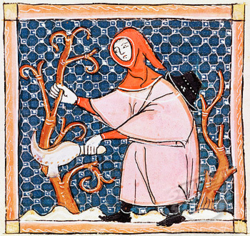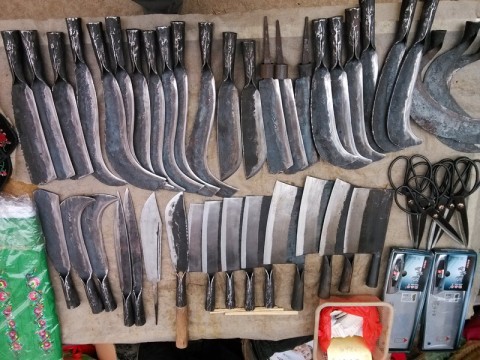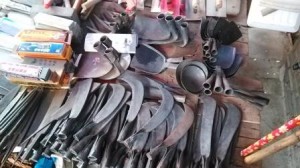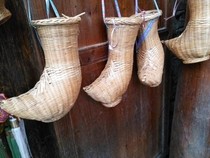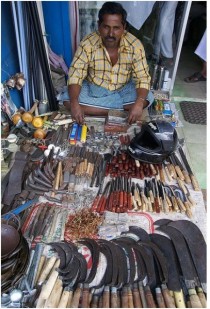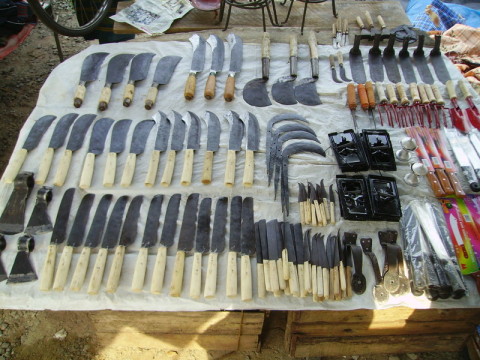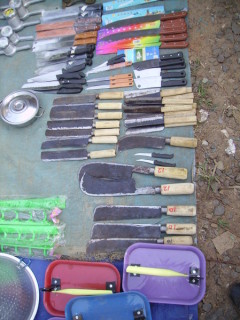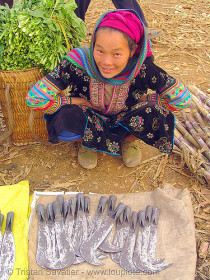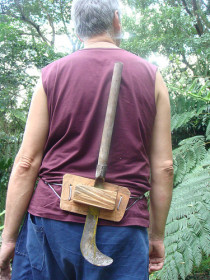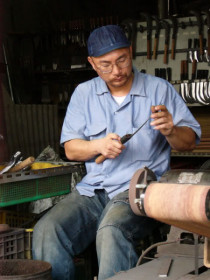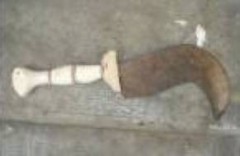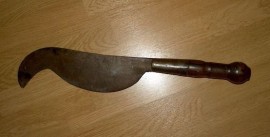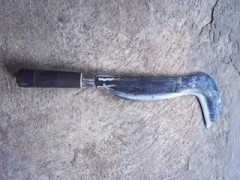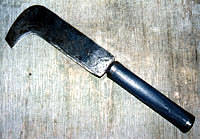Asian Billhooks
The billhooks can be found in most (probably all) Asian countries, from the Indian subcontinent to Japan. In Asia Minor, the Gulf States and North Africa the development probably mirrored the spread westwards into ancient Greece and later into the Roman Empire, from its origins in ancient Mesopotamia (now modern Iran and Iraq). However, in the Far East it is likey that like other basic tools such as the axe or sickle, or weapons such as spear or sword, it is a case of parallel, or independent, development (i.e. creating a tool to fulfil a basic requirement)...
The range of shapes varies from country to country, and region to region - again mirroring development in the West, where the shape refelected the usage and the type of materilal to be cut. A Japanese nata or kama, used to cut bamboo, a hollow grass like plant, will require a different blade to one used to cut hazel in England - yet at the same time both will have as many similarities as there are differences - both are billhooks...
Below some images taken from the web, or sent to me by fellow enthusiasts etc - it is not always possible to name them accurately or to place their origins exactly as often the website is in a language that even Google struggles with.... Just the tip of an almost unknown iceberg... Every country has its poorer regions, and in each tools are often made and sold locally...
The image of this Chinese billhook was found in the 1960's Whole Earth Catalogue. It was taken from Rudoph P Hommel's book 'China at Work' (published in 1937 after a trip to China in 1921 with Henry Chapman Mercer'). The projection at the end of the blade is to stop the sharp cutting edge from hitting the ground when splitting kindling wood for the oven or stove.
A Chinese tanged billhook, bought in Kowloon approx 2000. Private collection.
